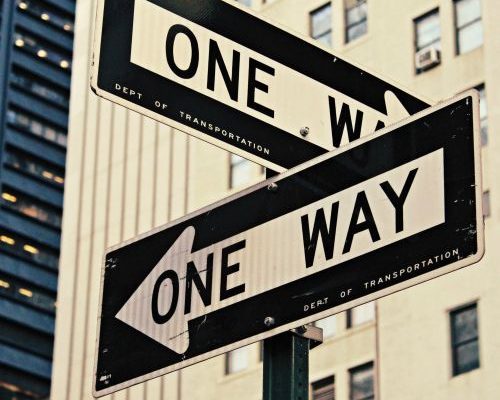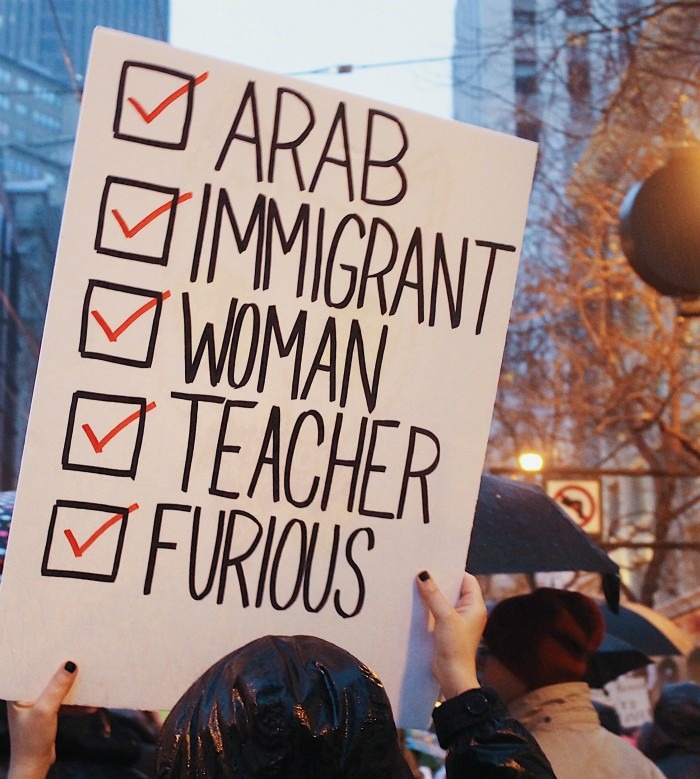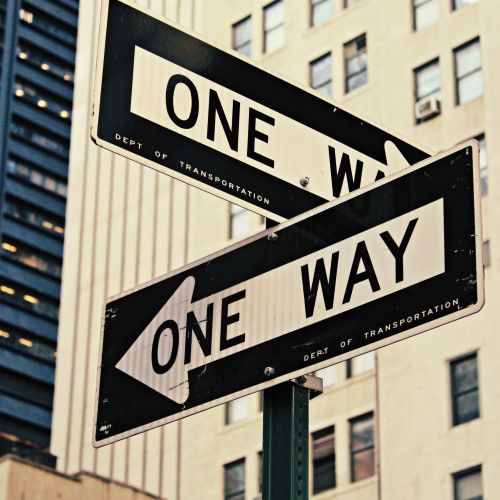The Safe spaces column is an attempt to explore today’s persistent socio-cultural debates in light of the…

Two views on inclusivity
The Safe spaces column is an attempt to explore today’s persistent socio-cultural debates in light of the alleged values of the librarian profession: intellectual freedom, equity, inclusiveness, diversity, evidence.
In 2018, I (Todd Kyle) started this column with the aim of exploring how our librarian values might lead us to look at the highly charged issues that some of us might call “culture wars.” Reaction to my column on white privilege, highly charged in its own right, led the Open Shelf editorial team members to re-examine their editorial policy, as well as their broader commitment to intellectual freedom. Now that this process has been completed, the editorial board suggested one final column, a conversation offering two perspectives on inclusivity as they relate to the library world. In this conversation, I am joined by my colleague Rashed Ahmad, who is CEO of Sables-Spanish Rivers Public Library and is a digital editor of Open Shelf.
Todd Kyle (T.K.)
I think it’s safe to say that inclusion is a central value of librarianship. We have always been about making sure that we represent the widest possible range of knowledge, and those efforts extend to serving a wide range of users in our communities. One thing we still struggle with, though, is diversifying our workforces. I look at many other professions—like finance or medicine or IT—and there are many more non-white faces. Why do you think we are so far behind?
Rashed Ahmad (R.A.)
Inclusion is very much a central and a natural value of librarianship. Inclusion is often reflected in our library policies, collections and services and mirrors other core values such as access and intellectual freedom. But I find that diversity is often approached as a problem that must be solved and is often measured and looked at from the issue of racial and ethnic representation. Our instinct as professionals is to rely on statistics to prove the presence or the absence of diversity, and so we continue to reflect and to reproduce the single set of dominant cultural values.[1]
Library staff seek to create official policies and practices to meet diversity goals, but there is a disconnect between policies and inclusive everyday practices. A culture of inclusivity is not achieved by merely creating a policy or by studying a set of statistics about a diverse workforce but by actively and repeatedly implementing an ongoing set of practices. A policy of inclusion is about cross-cultural communication, fostering a culture of mutual respect and ensuring that all members of an institution have access to the same opportunities.[2] How can we start cultivating a workforce with more respect for diverse experiences and voices?
T.K.
Yes, the “how” is the key question. Workplaces like ours can and do recognize the difference between diversity (the statistical presence of minority employees) and inclusion (the opportunities, respect, communication related to those employees already there). Both can be influenced by policies and practices. For example, there are hiring practices that can unintentionally disadvantage marginalized applicants. I’ve sometimes observed that interview criteria can disadvantage those applicants whose cultural disposition is to maintain harmony rather than to put forth critical ideas. Is this practice an instance of the “dominant cultural values” you talk about?
Workplace culture is even more difficult to nudge in the right direction. Once you have hired people, how do you ensure that they are welcomed in the same informal and often unspoken networks as everyone else? If you hire a transgender employee, for example, you might, as the supervisor, set a tone by intentionally introducing the employee using their preferred pronouns; for example, “I’d like you to meet X. She just started work this week.” But how do you ensure that her co-workers treat her in a socially comfortable way? In fact, I’ve noticed that sometimes people are uncomfortable with the practice of having everybody declare their pronouns at collegial gatherings.

R.A.
“Dominant cultural values” refers to the Western-European world view that is, for the most part, at the centre of Canada’s historical and social narrative including multiculturalism. These values are also a point from which all other world views must learn to navigate. I think that the value of diversity comes from this very fact: Certain individuals have navigated a completely unique lived experience.
To continue with your example, hiring practices can reflect and can reinforce these dominant values, when those individuals involved are acutely aware of how their own cultural values affect professional and personal bias or approaches. Why would organizations want to recognize diversity and then choose to measure this aspect of the workplace using dominant values such as assertiveness or even subtle dominant cultural norms such as handshakes and eye contact? I think this disconnect is where well-meaning policies fail to be fully realized: Everyday practices remain unchanged.
“Workplace culture” reflects more accurately what I mean by “everyday practices,” and as you mention, it is very difficult to change. Workplace culture is influenced by leadership, personalities, organizational values, and possibly to a greater extent, by larger social movements that social media helps to make more accessible today than at any other point in history. If our professional workspaces are not harmonious enough to allow critical ideas to change our everyday practices and to influence the direction of our culture, then our values and our realities clash once again. The question of welcoming people from LGBTQ2I+ communities into our workplaces demonstrates how many positive social changes that naturally align with library values can be met with resistance and can make some of our colleagues uncomfortable.
I believe each individual has an obligation to go back to examine their own cultural values in relation to the dominant cultural values and to the influx of influential social change. This examination can often be an intimidating experience, and we might be tempted to rely on the experiences of others to inform our own opinions. But part of the solution may be that some of us need to go through levels of re-educating and relearning. Organizations can and should play a role in this re-education and relearning process, however uncomfortable the process may be.
This is the time when the leadership can nudge organizational culture by means of cultural sensitivity training and by communicating workplace values and behaviours that ensure that a workplace can be a consistently safe space. The concepts of social oppression and intersectionality are very effective and very useful in this process, helping individuals to explore established models of oppression[3] and to recognize where everyone stands in oppressive structures. However, employee buy-in to these concepts is not universal, and at times, individuals actively resist these ideas.
T.K.
And admittedly, I can, at times, be one of those resistors. I prefer a perspective that is pro-inclusion rather than anti-oppression. In fact, the very word “oppression” seems an exaggeration. “Oppression” is an illustration of what has been called “the untruth of fragility”; i.e., the idea that human beings need to be protected from all forms of adversity lest they are harmed psychologically[4]. This idea is the same untruth that leads us to categorize the most innocent of comments as “microaggressions.”
There is an alternative model of “honest diversity”[5] that respects the diverse nature of the dominant culture and that doesn’t stereotype the individuals. In my example, people may believe that declaring their pronouns, even when there may be not a single transgender person in their midst, is a social mechanism for reinforcing the idea that their perspective is wrong and for making them feel guilty for being cisgender. I believe the right choice is to simply accept a gender-nonconforming person. Unfortunately, sometimes, in our quest for diversity of identity, we fail to respect diversity of thought and of feeling and end up alienating those who are not seen as “oppressed.”
In the example of cultural norms such as assertiveness (or even handshakes), I believe we should try to find ways to acknowledge and to recognize that there are many ways for employees to be successful and to ensure that we are gauging the “fit” of a job applicant without being clouded by prior assumptions. But it is equally important that we allow honesty to flourish and that we recognize that a measure based on these criteria might unfairly judge a (particularly shy and awkward) white male cisgender employee as much as it unfairly judges someone with a non-majority race or gender identity. “Lived experience” is an important factor in everyone’s makeup and perspective.
But we’ve really digressed from our original question, Why are library workspaces particularly homogenous? I wonder if it has less to do with our efforts, or lack of, to encourage inclusion and more to do with something rather perfunctory: Unlike other industries, our growth is very limited; it takes a very long time for our demographics to catch up, when retirement is the only thing that opens up new, especially senior, positions. If this delay is the case, then when the demographics do change, my hope is that we have a new understanding and that we have done a good job with outreach and with mentorship to facilitate a very diverse crowd of applicants.

R.A.
Time does have a big role to play in encouraging and in realizing diversity in libraries. With time, change comes, and new roles open, and a diverse pool of qualified candidates is given opportunities. For library staff today, however, time cannot be the only vehicle to increase inclusion and diversity. Each community, student population or customer group has its own unique demographics, and there are always users and non-users of the library. Library teams that commit to increasing inclusion and diversity can begin to build a relationship with a group with which they may not have actively engaged in the past.
More active engagement can be in the form of advisory committees, networking with key organizations or building relationships with interested community leaders. Once again, this engagement is a time-consuming process, and we must understand that sometimes a partnership may not be achieved, even through best of efforts on the library’s part.
[1] Stoffle, C., & Tarin, P. (1994). No place for neutrality: The case for multiculturalism. Library Journal, 119(12), 46-49.
[2] Hastings, S. (2015). If diversity is a natural state, why don’t our libraries mirror the populations they serve?. The Library Quarterly: Information, Community, Policy, 85(2), 133-138.
[3] Adams, M., Bell, L. & Griffin, P. (2007). Teaching for diversity and social justice. (2nd Ed.). New York, NY: Routledge.
[4] ?Lukianoff, G. & Haidt, J. (2018). The coddling of the American mind: how good intentions and bad ideas are setting up a generation for failure. New York, NY: Penguin Press.
[5] Manji, I. (2019). Don’t label me: an incredible conversation for divided times. New York, NY: St Martins Press.
Photo by lucia on Unsplash
Photo by Nathan Anderson on Unsplash
_____________________________________________
Rashed Ahmad is the CEO of the Sables-Spanish Rivers Public Library and a member of the Open Shelf editorial team. Rashed can be reached at rashedahm [at] gmail.com.
Todd Kyle, CEO, Newmarket Public Library, is a former OLA president (2016) and current Vice-Chair of the Canadian Federation of Library Associations-Fédération canadienne des associations de bibliothèques. His contributions to Open Shelf include the Policy wonk column. Todd can be reached at tkyle [at] newmarketpl.ca.
